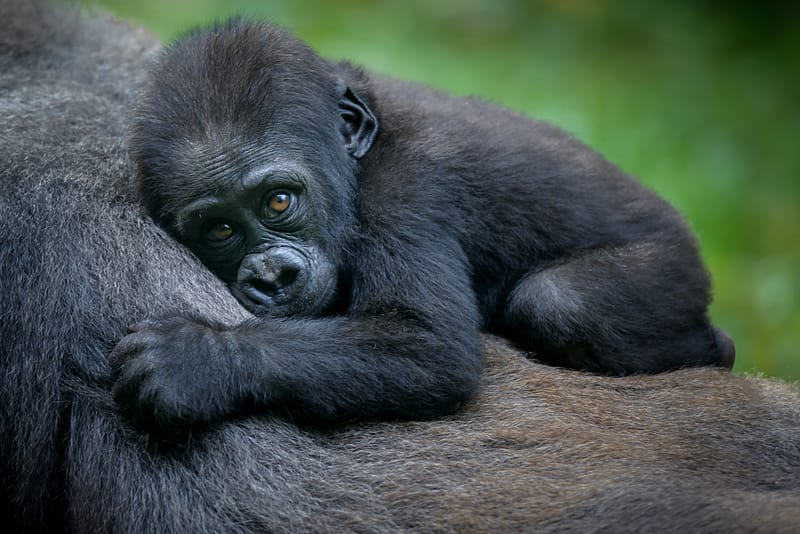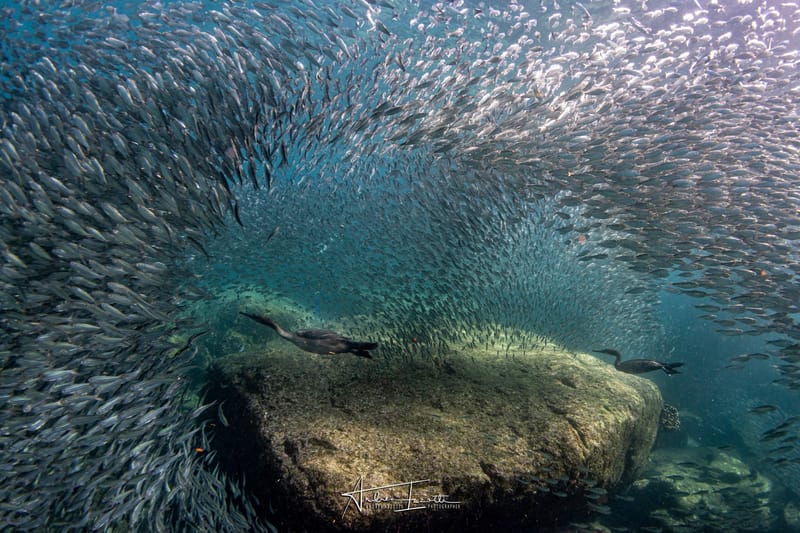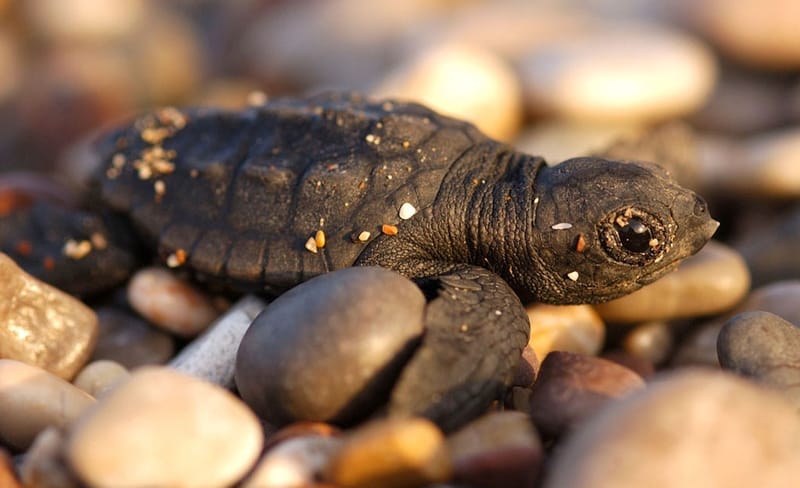12 film artists in symbiosis with animal species: 'Let's protect our future'
"The panda is us": WWF photo exhibition opened.

From wolves to lionesses, from bonobos to praying mantis, from leopards to brown and polar bears: we humans are among the endangered species.
From today, March 13, and then again March 14, 15 and 17, the WWF exhibition will be on view free of charge from 10 a.m. to 7 p.m. at the Acquario Romano Monumental Complex, House of Architecture, at 47 Manfredo Fanti Square in Rome.
It is a challenge of mimesis that into which 12 artists of Italian cinema have pushed themselves, who accepted the invitation of WWF Italy to participate in the photographic exhibition "The Panda is Us," to interpret in an intimate and personal way the gaze of an endangered animal species, as never before.
The result can be seen free of charge starting tomorrow, on March 13, 14, 15 and 17 from 10 a.m. to 7 p.m. at the Acquario Romano Monumental Complex, House of Architecture, Piazza Manfredo Fanti 47 in Rome. The night before last the inauguration with a reserved event, which was also attended by some of the exhibition's leading actors: Mariagrazia Cucinotta, Caterina Guzzanti, Maya Sansa, Caterina Murino, Alan Cappelli Goetz and Lillo Petrolo.
The exhibition, which is the brainchild of photographers Alessandro Dobici, Alberto Cambone and Roberto Isotti, is dedicated to WWF's #ThePandaWeAreWe campaign, which features a particular species to be saved: the human one. After years of work and commitment by the organization, the Panda is no longer an immediately endangered but still vulnerable species. Biodiversity, on the other hand, is still endangered, and with it the well-being and survival of humanity are also at risk. Every day wild animals disappear and their habitats become depleted. Today the panda, the endangered species, is us: we share with Nature the same features, the same home, the same fate.
The gazes of Alan Cappelli Goetz, Maria Grazia Cucinotta, Sabrina Ferilli, Stefano Fresi, Caterina Guzzanti, Vinicio Marchioni, Caterina Murino, Giorgio Panariello, Lillo Petrolo, Virginia Raffaele, Maya Sansa and Luca Ward , and those of the animals, thus intertwine with those of the viewers to send an important message: protecting Nature and endangered species is a vital action for the survival of humanity itself. As WWF demonstrated in its latest report, animals are true allies in ensuring ecosystem services. The loss of one species, in fact, causes a "domino" effect, which promotes the extinction of others or the degradation of ecosystems that depend on it with damage that trickles down to us humans. Because of our actions today, the extinction rate is estimated to be a thousand times higher than the natural rate. But the power to rewrite the future is in our hands. In our choices. In the small and large actions we can take every day.
How the exhibition is composed
The exhibition presents two sections. The central section, entitled "The Panda is Us," features 12 diptychs composed of the portrait of an artist, made by Alessandro Dobici, juxtaposed with the portrait of an animal, belonging to an endangered species, made by Alberto Cambone and Roberto Isotti. The diptychs show the deep connection between human and animal species.
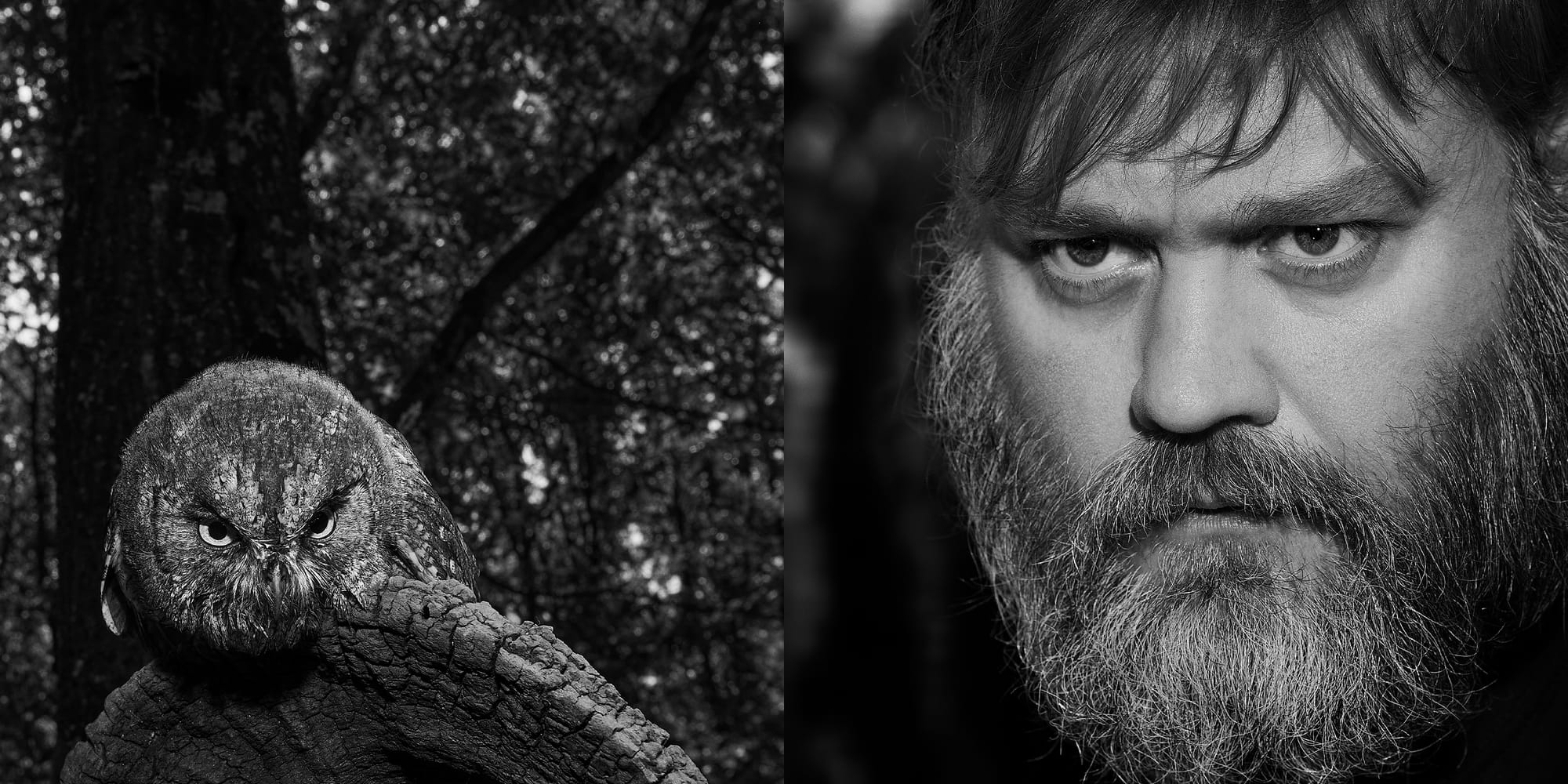
Stefano Fresi
plays the scops owl (Otus scops): "We are endangered by our own will, it took very little to convince me to participate in this project. The choice of this species was driven by a romantic reason : I am of Sardinian origin and for years in the summer I used to fall asleep with the sounds perfectly mixed by mother nature of crickets in the background and the owl scanning the night".
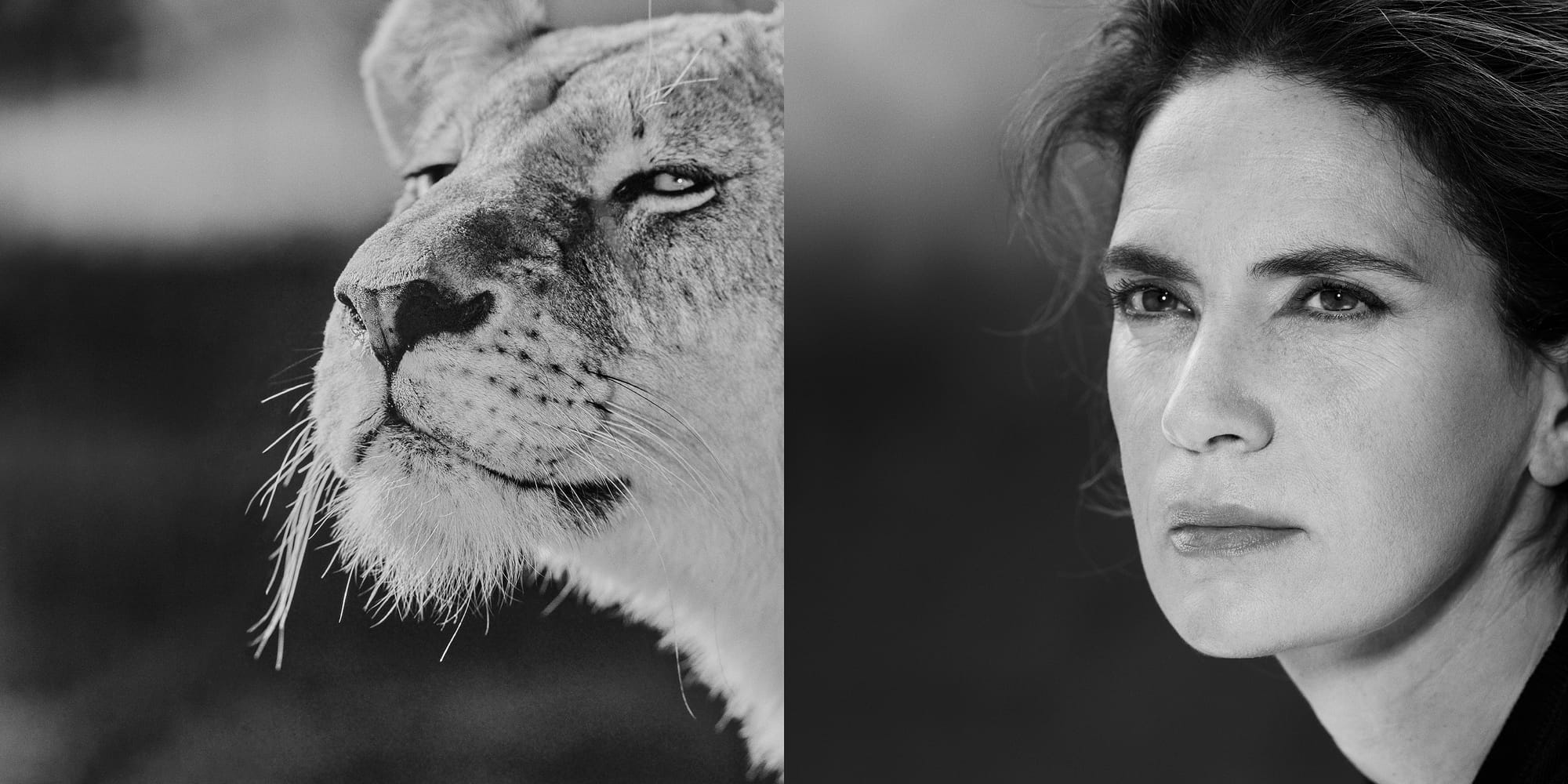
Maya Sansa
On display is alongside a proud Lioness (Panthera leo):"I am convinced that every human being has a special connection with an animal. When I study a character I always start with an animal, because this allows me to find another rhythm, another truth".
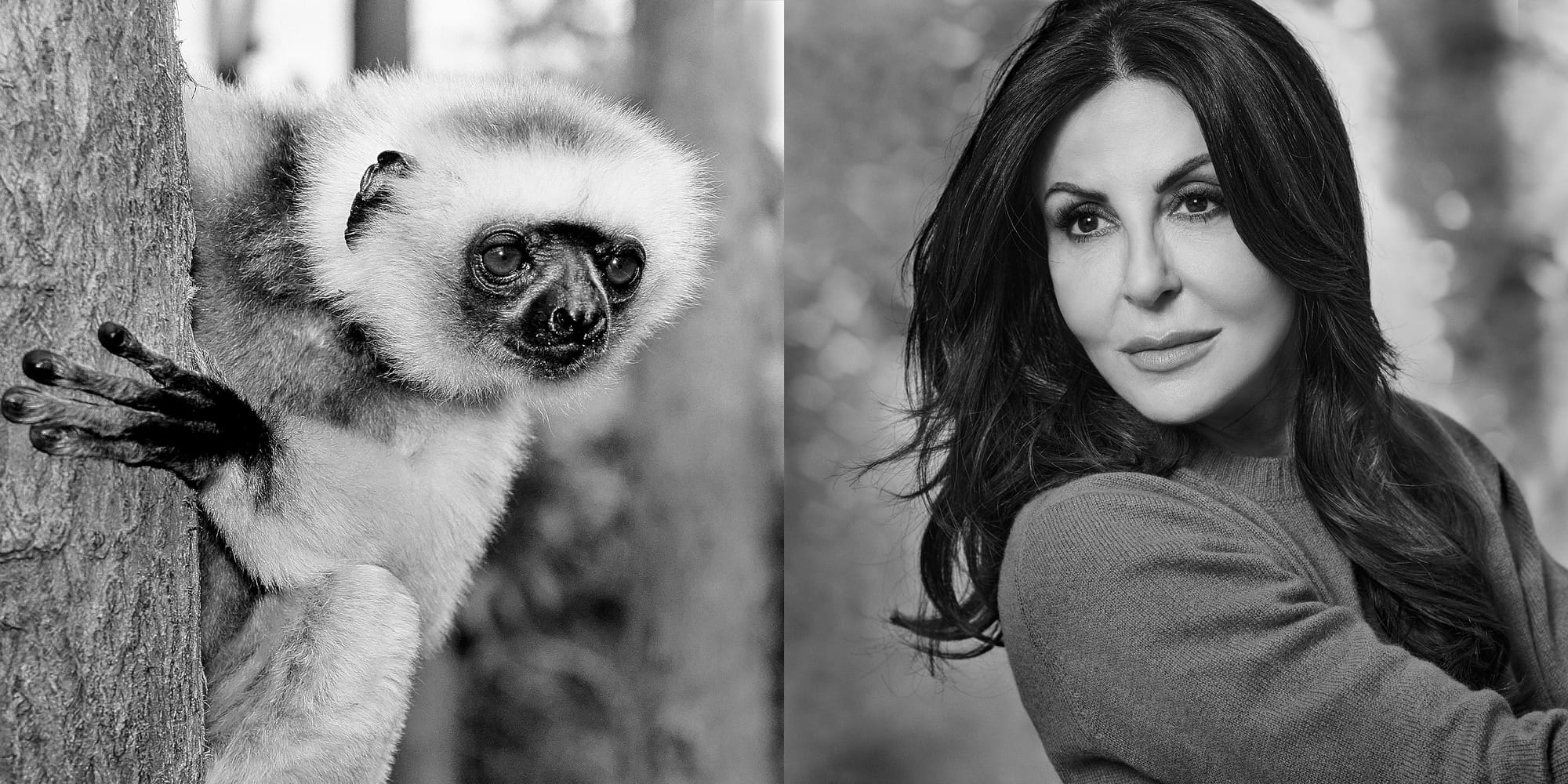
Sabrina Ferilli
Plays the diademed Sifaka (Propithecus diadema): "I like to observe, to carp but always aiming for team spirit, just like the Sifaka, who without a pack cannot stay. In life we should take example more often from animals", declares the actress.
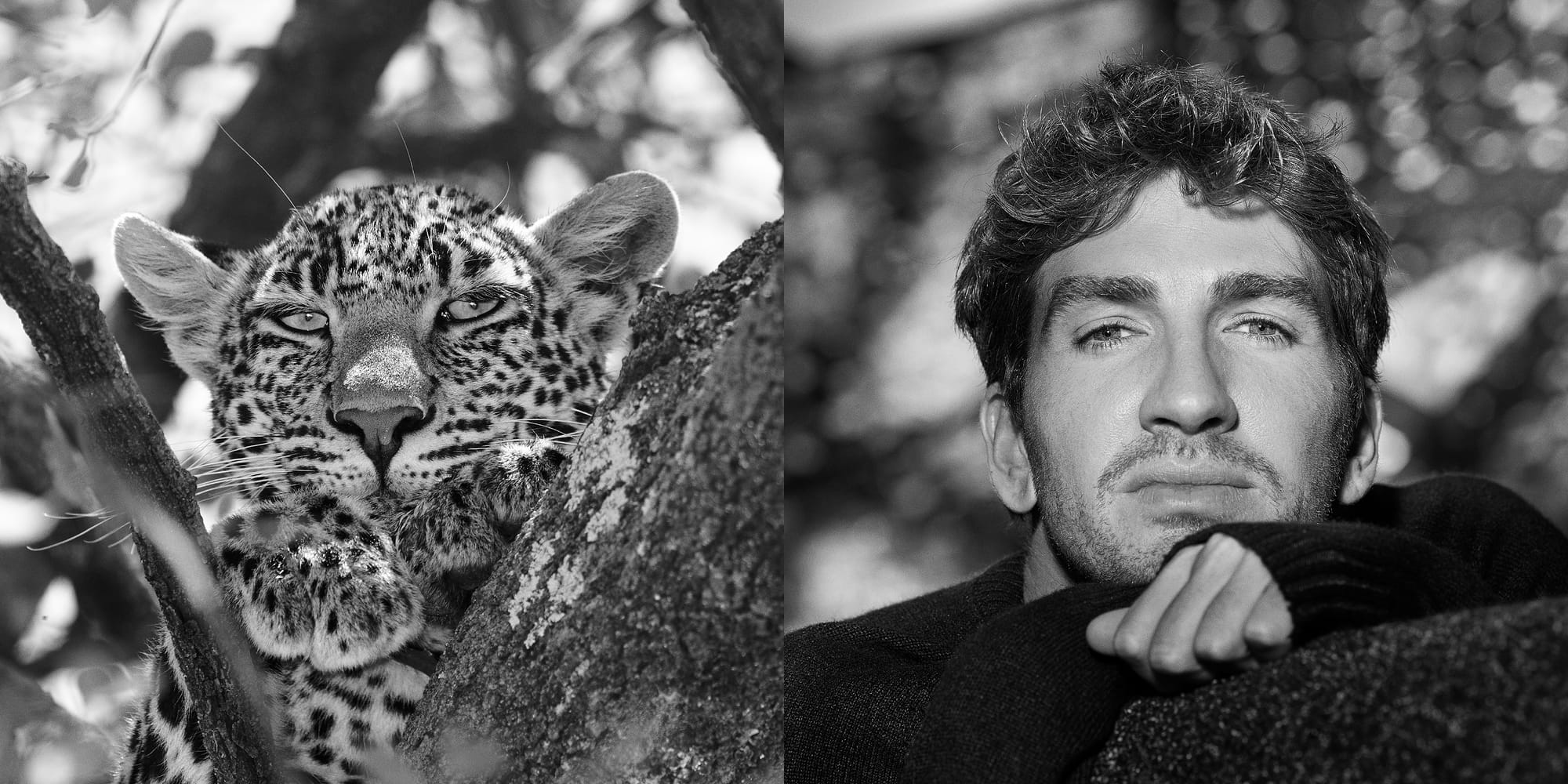
Alan Cappelli Goetz
Plays the Leopard (Panthera pardus): "I have a great affinity with felines; they have a character, an energy, an elegance that speaks to me. They have a delicacy, a strength and an independence that binds us together.".
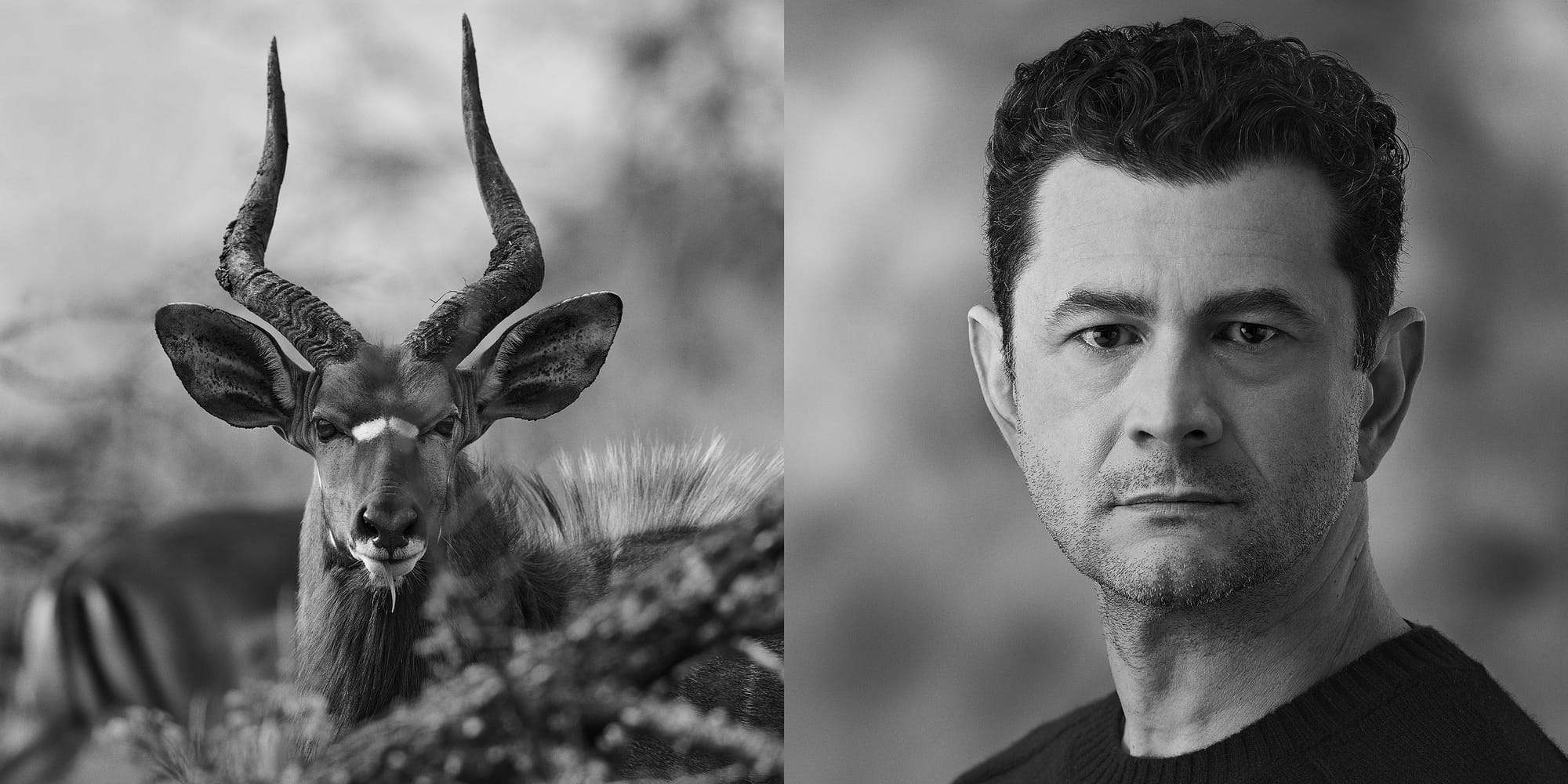
Vinicio Marchioni
He put himself in the shoes of the Nyala (Tragelaphus angasi) "Because it has a look that is very difficult to remake. I love animals for the example they give us, for their diversity. The relationship with them should teach man to get rid of his self-centeredness that is harming the planet. In everyday life there are many things we can do, what I try to do is to educate my children not to grow up like our generation, which exploited natural resources as if they were infinite".
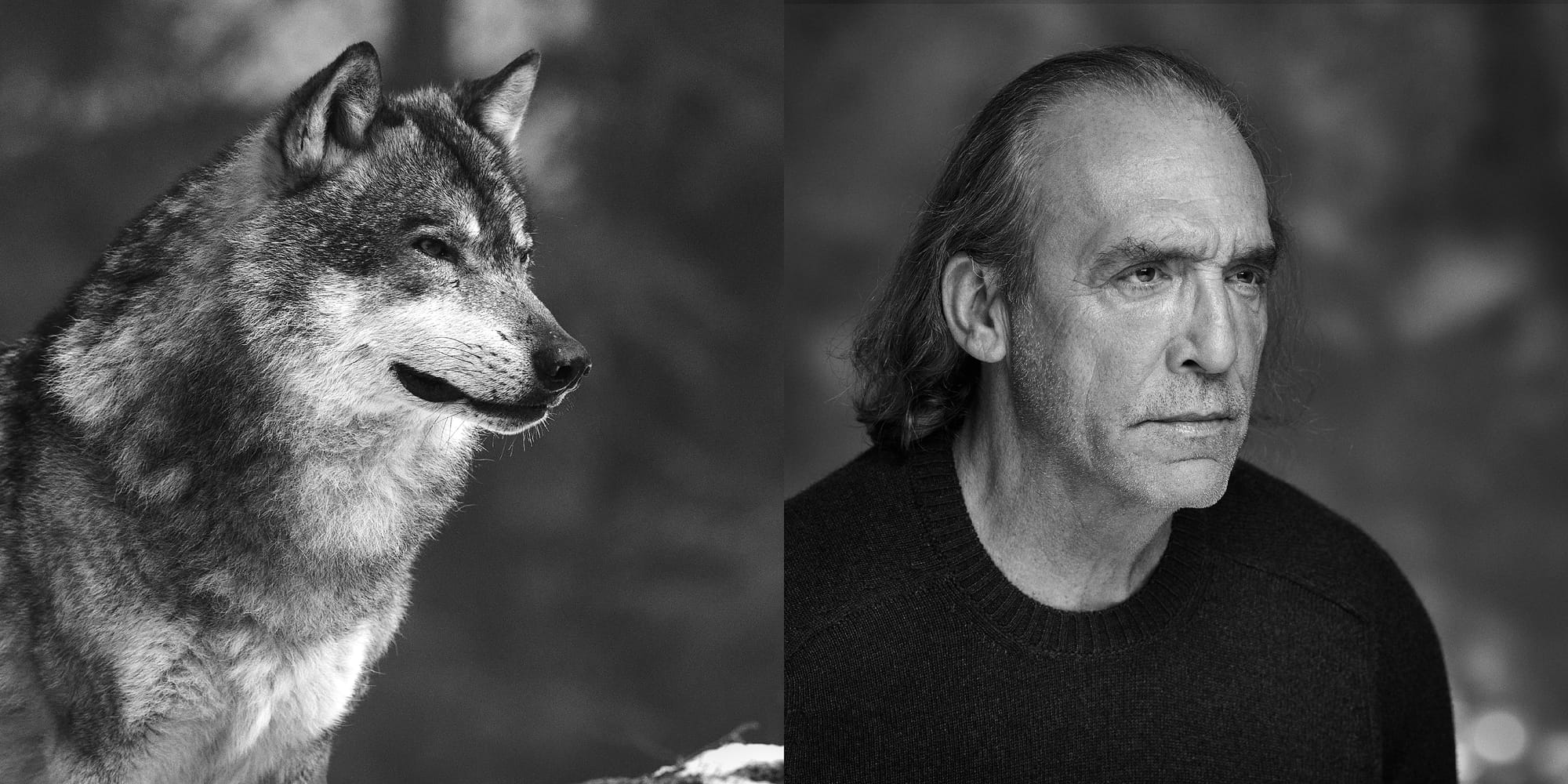
Luke Ward
"I immediately liked the idea of combining human and animal expressiveness" says the actor and voice actor who chose the Wolf (Canis lupus) for two reasons: "I had to call myself Wolf, then 16 years ago Wolf became my son's name. Then because the wolf is that animal that holds the family together, welcomes them and makes them grow".
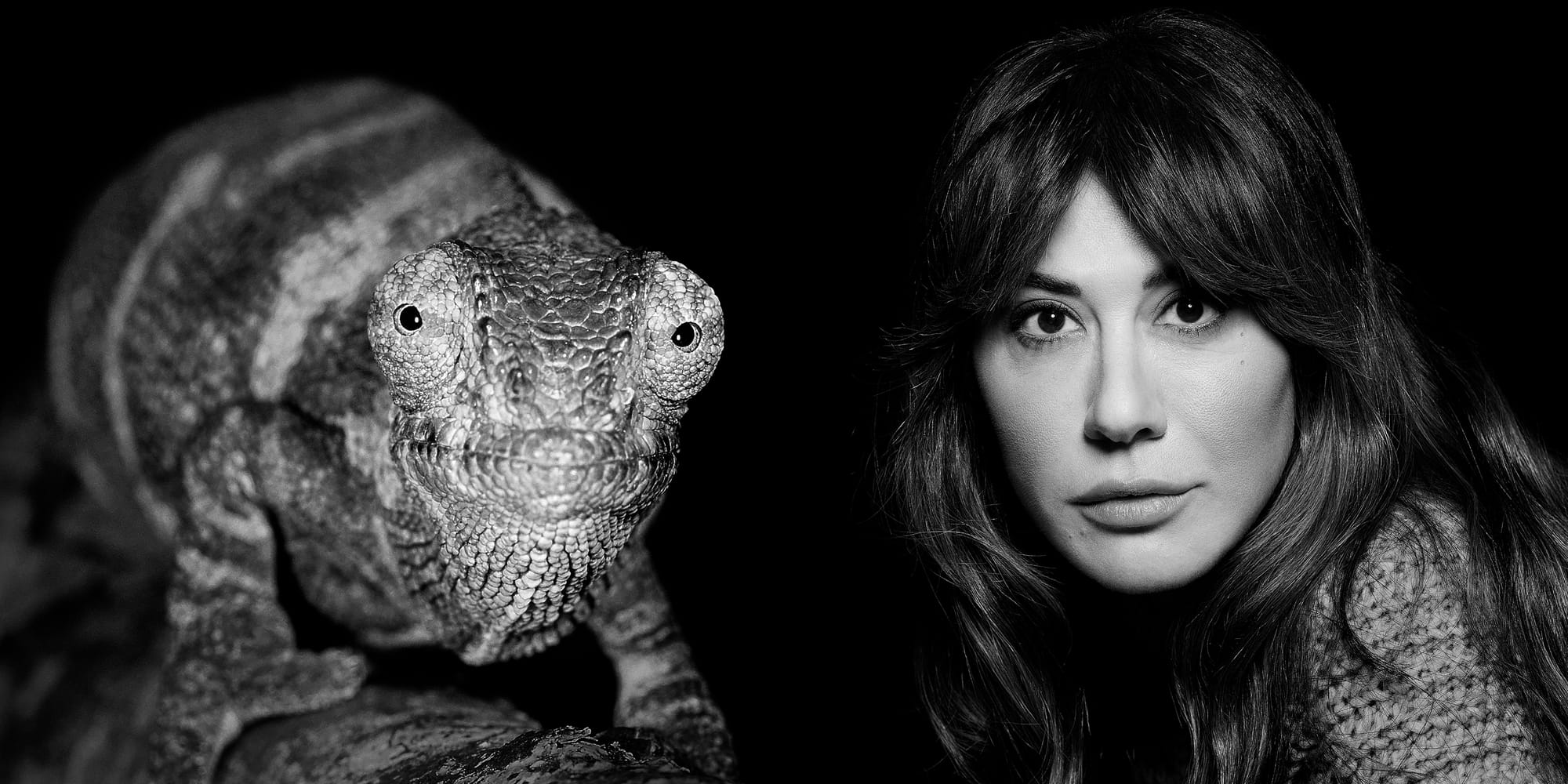
Virginia Raphael
He chose the bifid chameleon(Furcifer bifidus): "It camouflages itself and changes color to conquer, to hunt, and thus to live. But actually the color change is for the emotions it feels. Sometimes, changing, is the only way to survive".
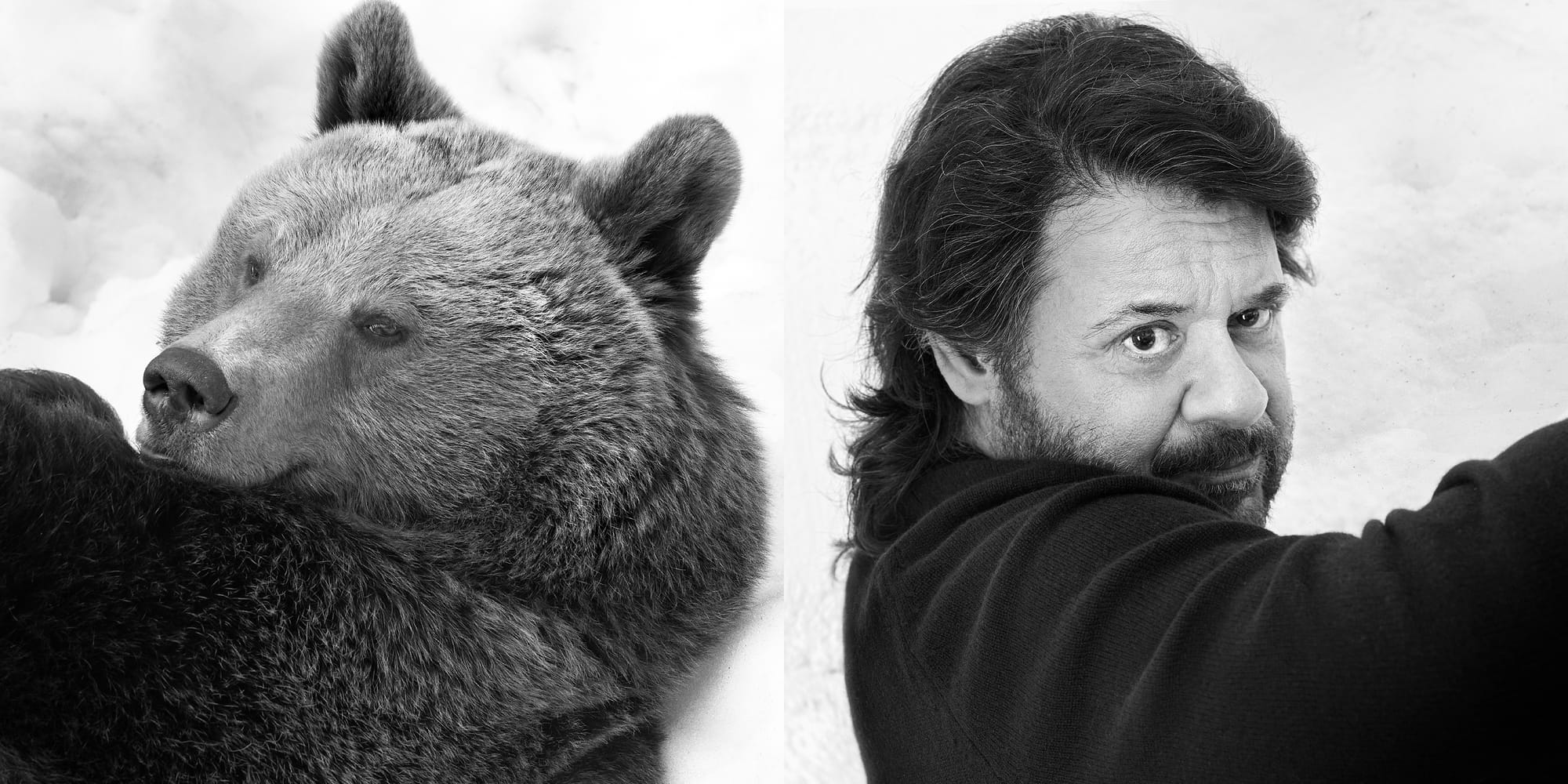
Lillo Petrolo
Long working alongside WWF, for this exhibition he chose the brown bear (Ursus arctos): "I also have physical affinities with the bear, I immediately loved this photo in which the bear looks at us sternly but maintains a certain gentleness".
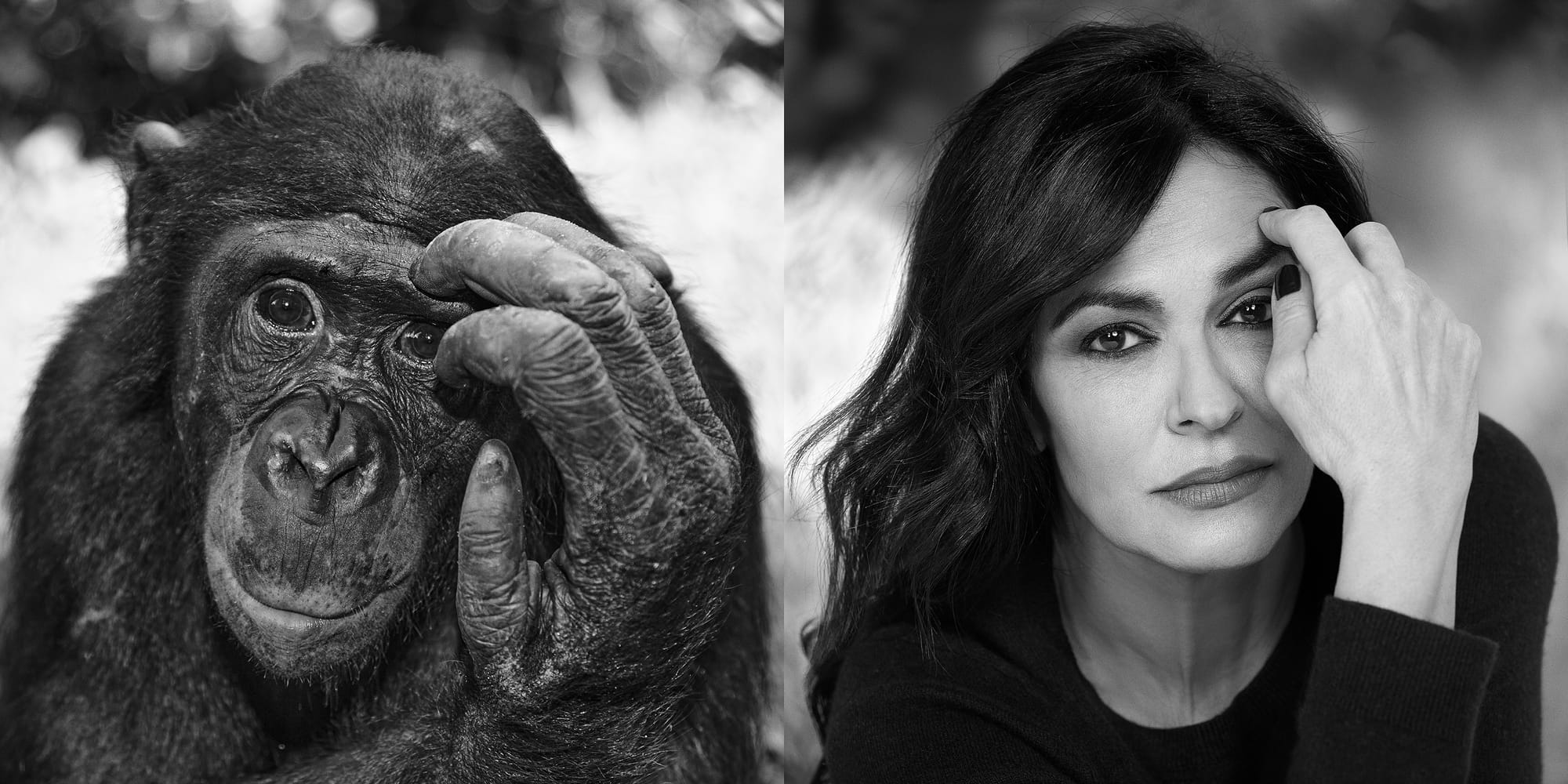
Mariagrazia Cucinotta
He plays the Bonobo (Pan paniscus): "When I was little, everyone called me a monkey because I have very long arms and legs and then I had a lot of hair." The actress' commitment to the environment is made up of many daily gestures, "I try to do everything I can because every little thing has an impact on the environment so we must always try to choose the most sustainable alternative in our way of life".
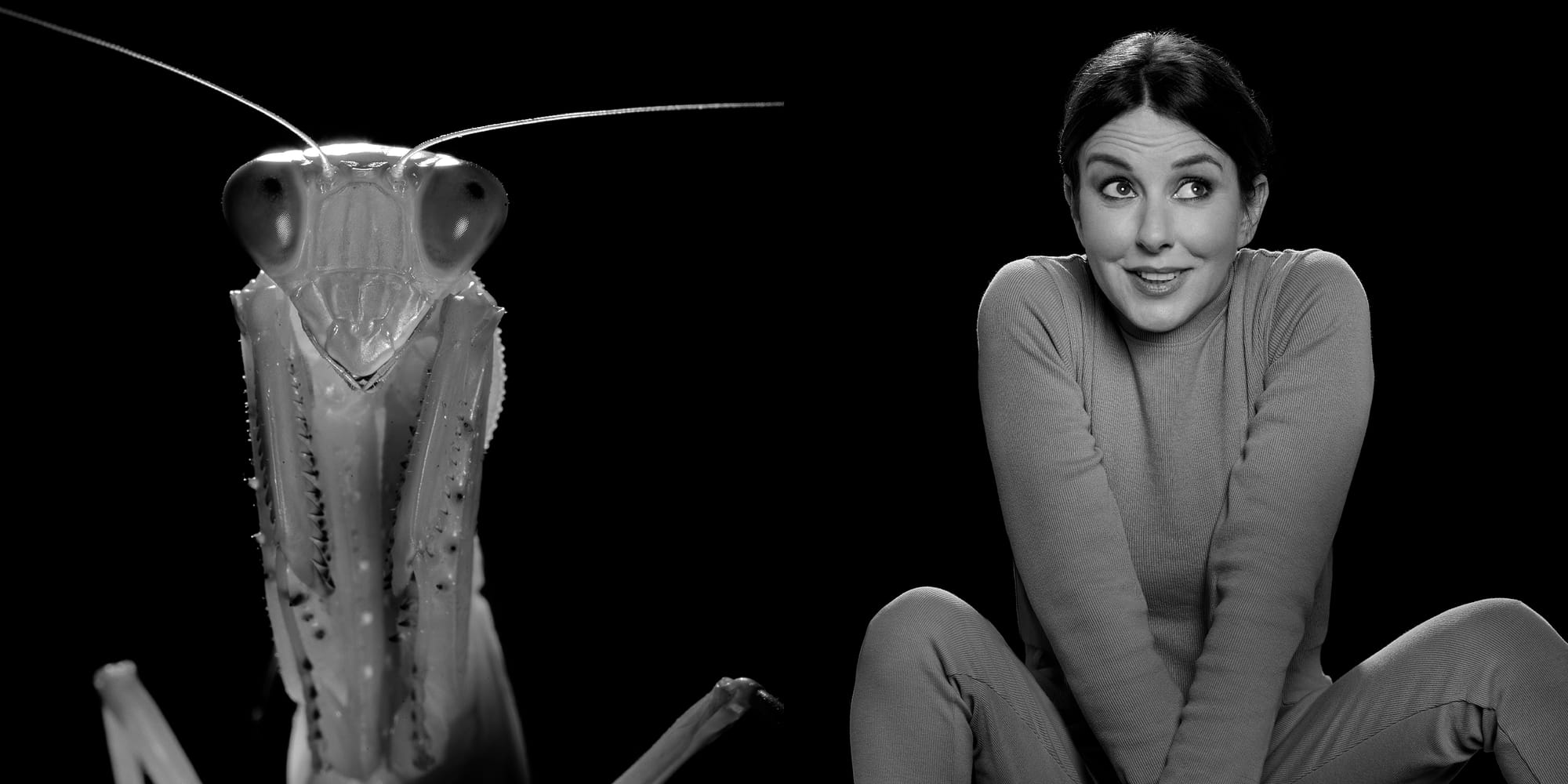
Caterina Guzzanti
He chose to play the Congo praying mantis (Sphodromantis congica) because she was struck by its expression: "I chose the mantis for my portrait because of the look, funny and guilty at the same time. My wild side comes out when I am free to be someone else through a character".
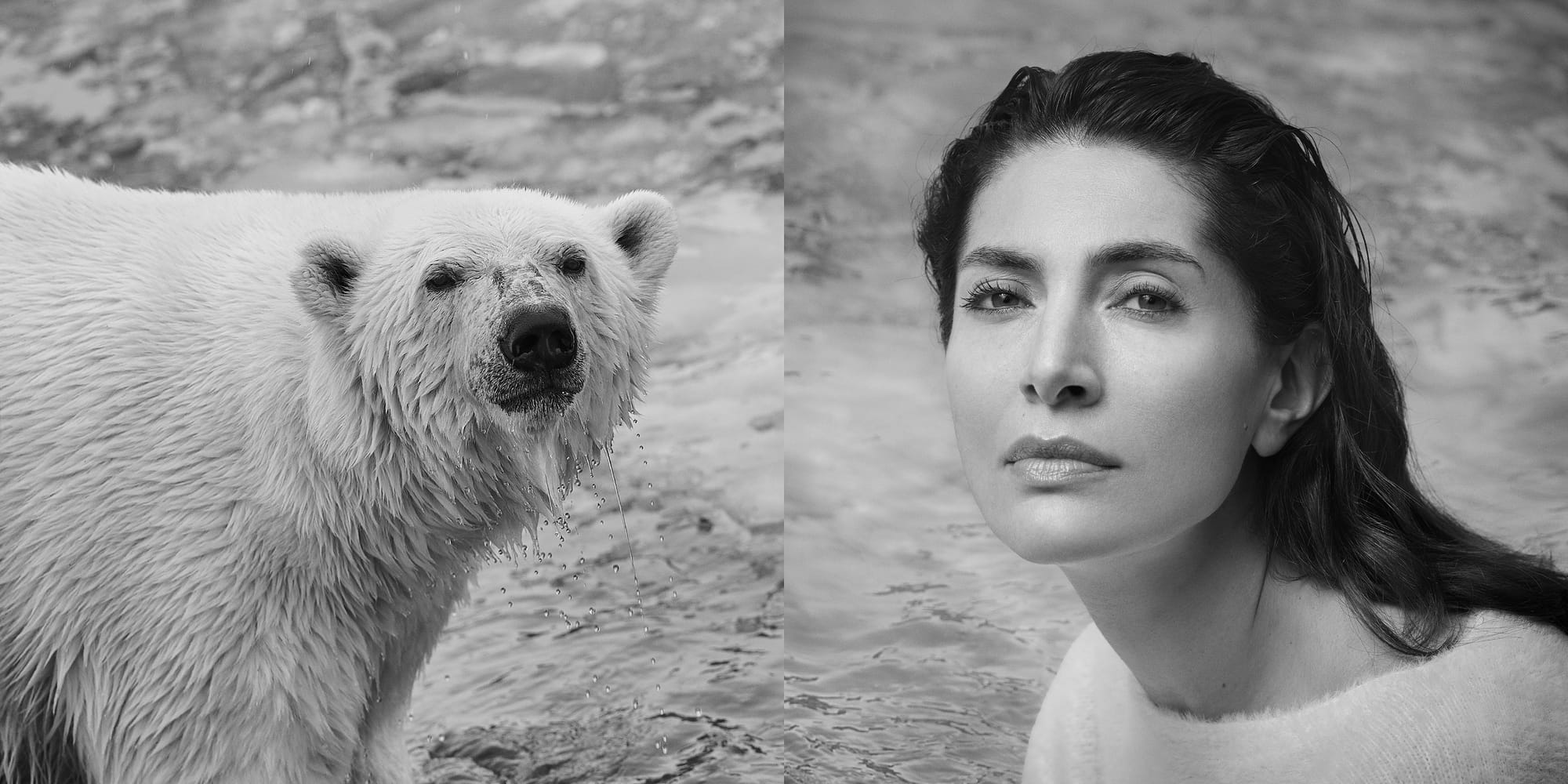
Caterina Murino
plays the Polar Bear (Ursus maritimus), among those in the diptychs the most endangered species and a symbol of the climate crisis: "We live in a world where animal man has forgotten that he is part of the same animal kingdom and shamelessly slaughters other animals. I hope WWF's campaign can remind humanity that it is not alone, but must fight united to protect animal species, because protecting them will mean saving us too ... if we must".
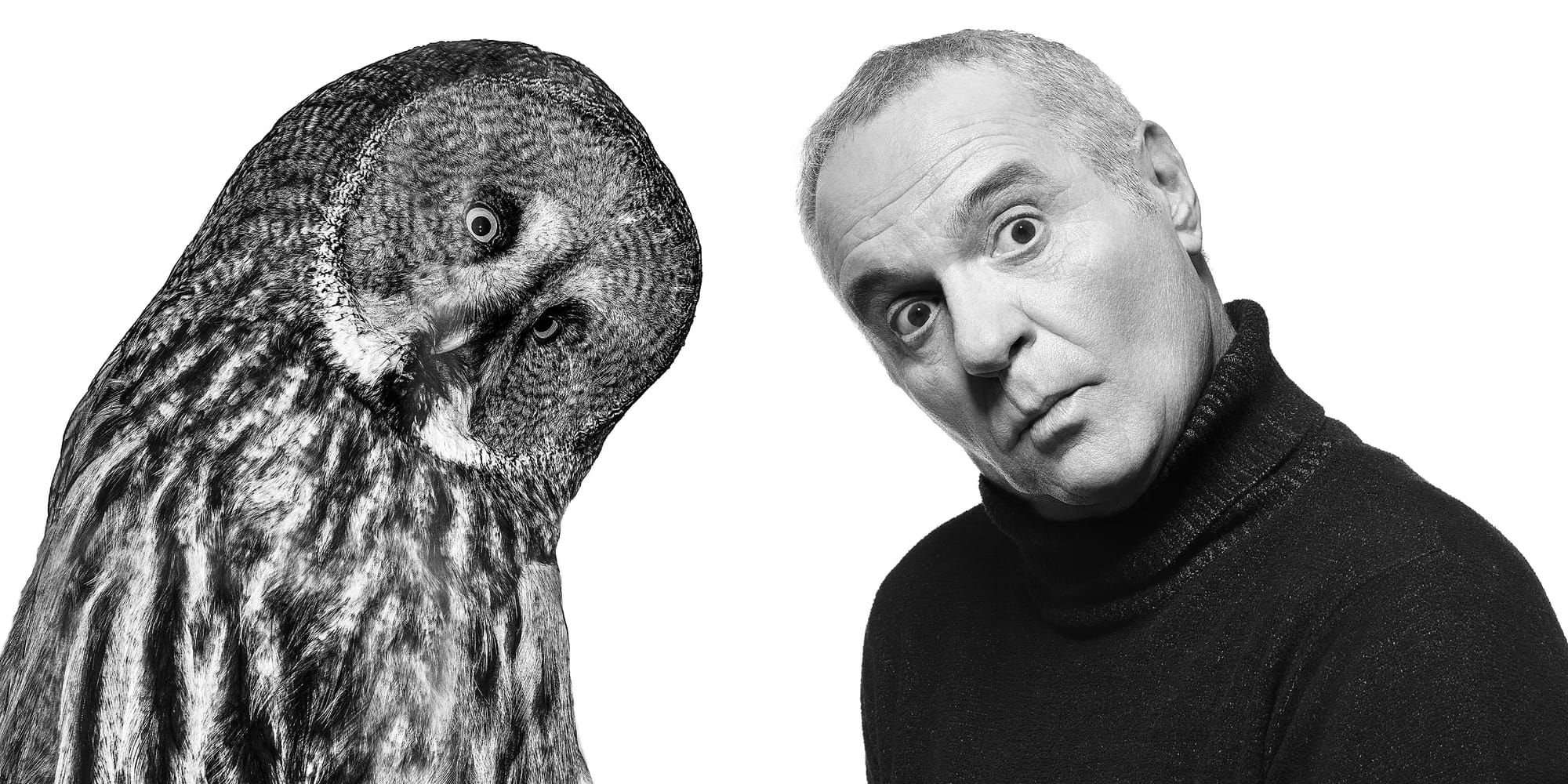
Giorgio Panariello
He put himself in the shoes of the Lapland tawny owl (Strix nebulosa): "I am a keen observer and this allows me to create many characters. In a forest I would know how to survive by adapting and imitating the other animals around me".
The second section of the exhibition, titled Vanishing Beauty from the Homo ambiens project, is dedicated to endangered biodiversity and features 32 portraits of animals by Alberto Cambone and Roberto Isotti. These two sections share the choice of format and black and white to highlight the symmetry between human fate and that of other animals.
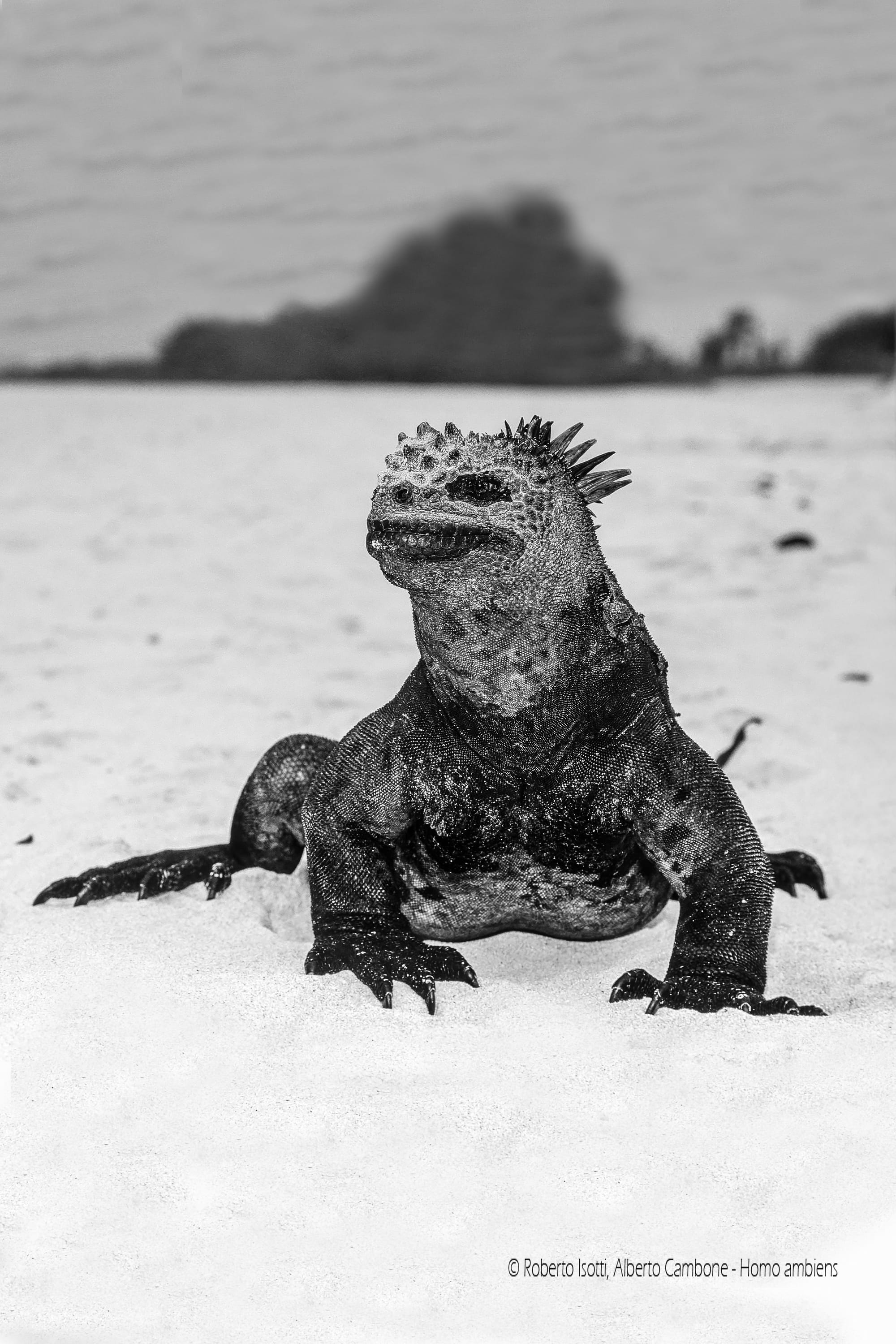
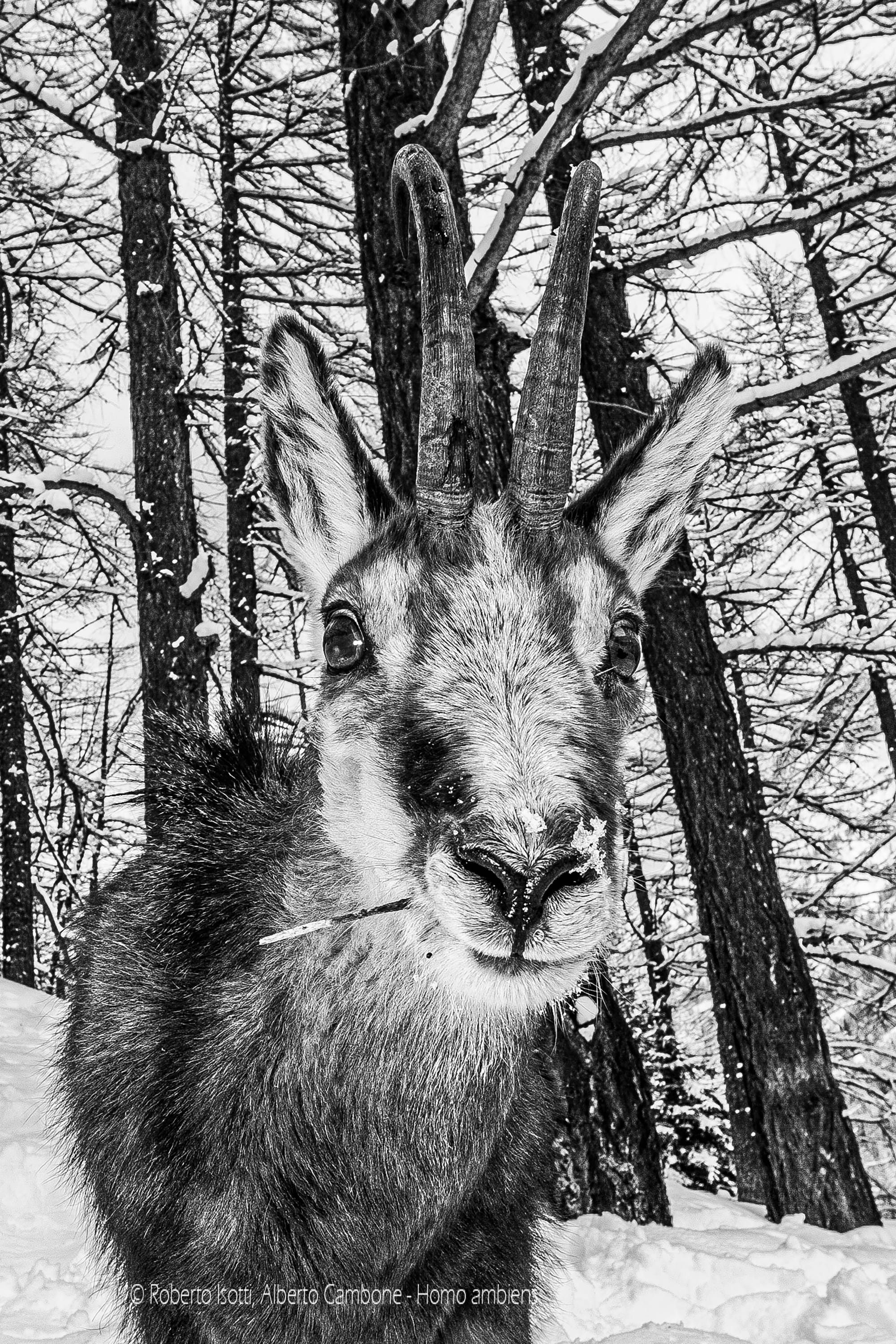
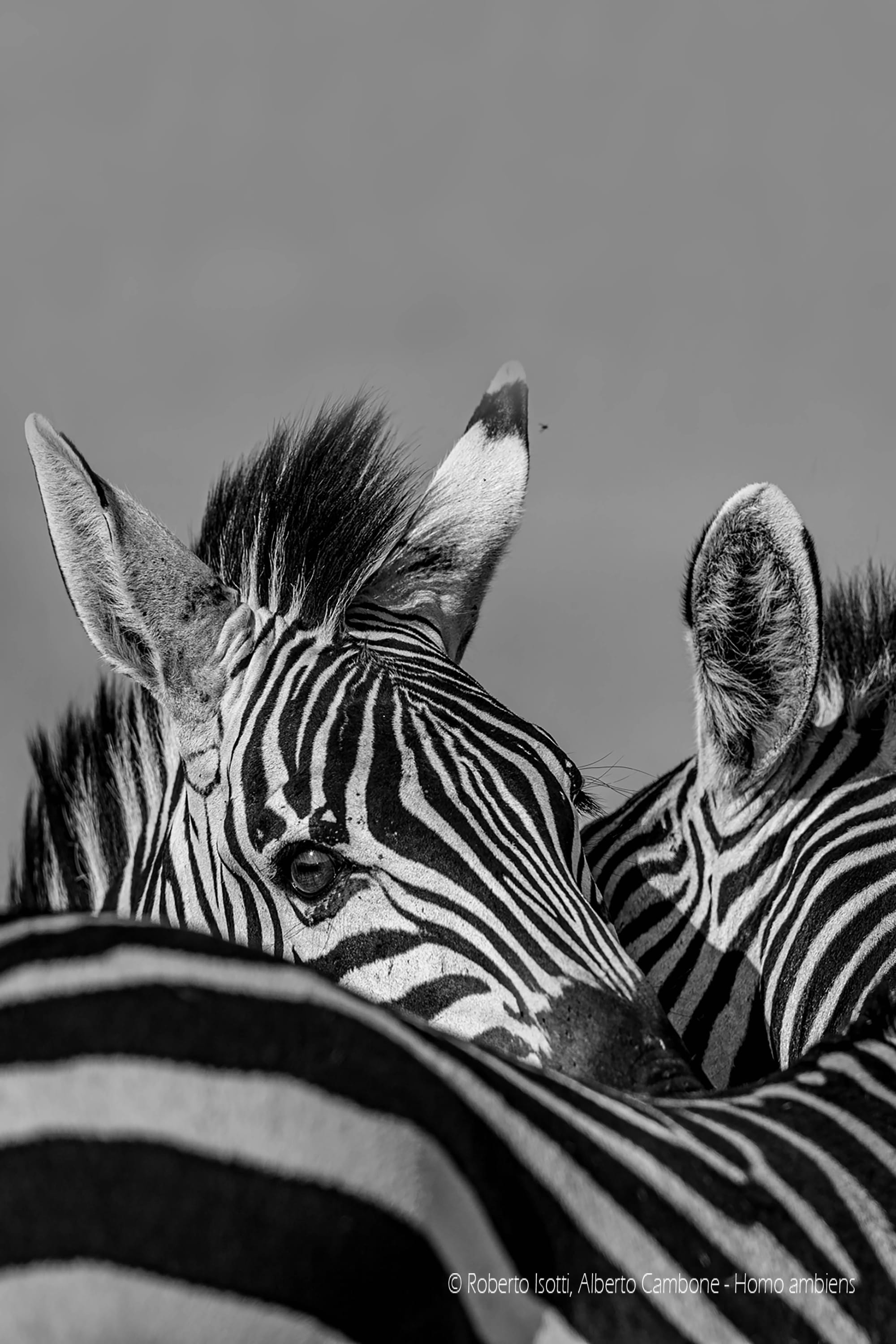
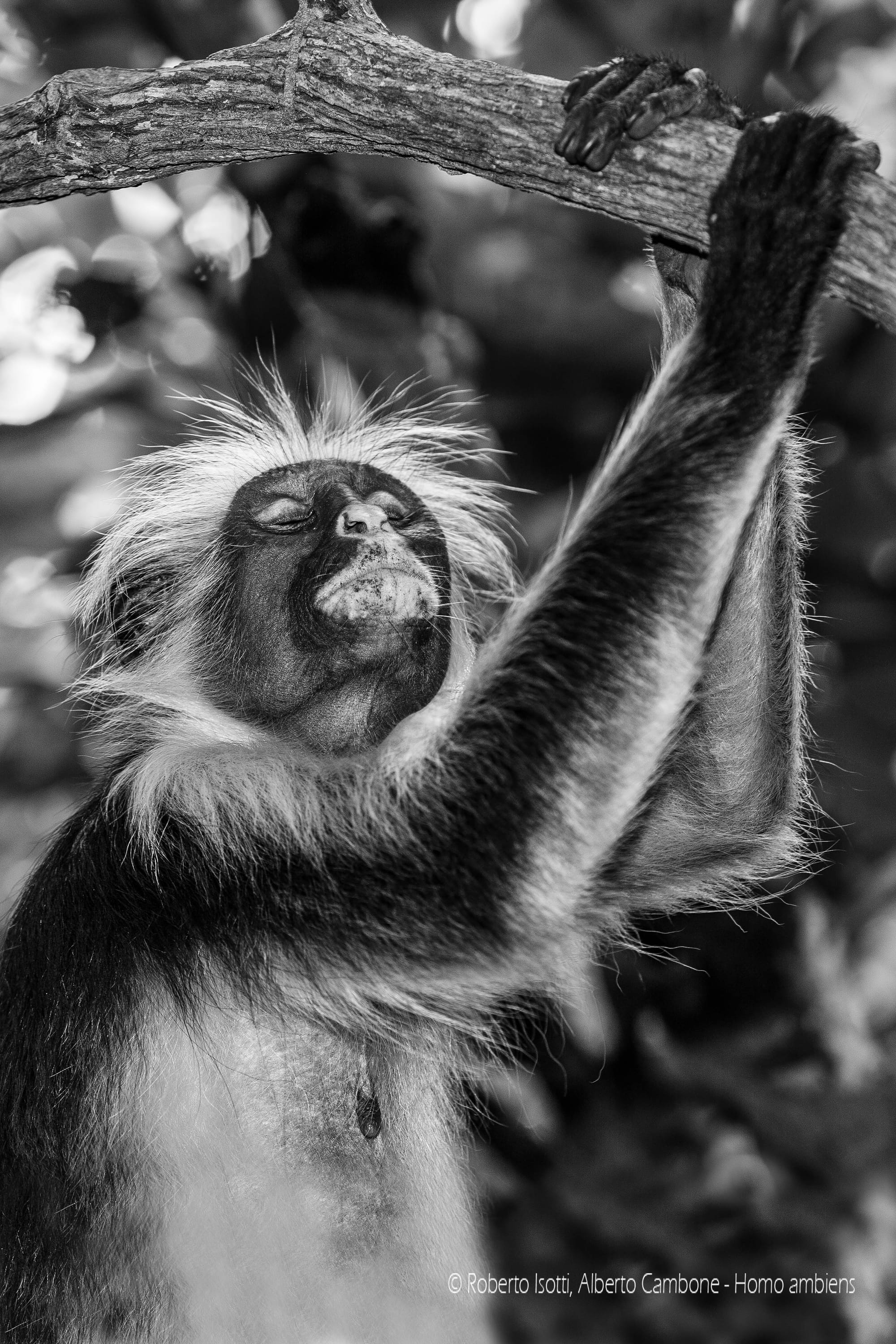
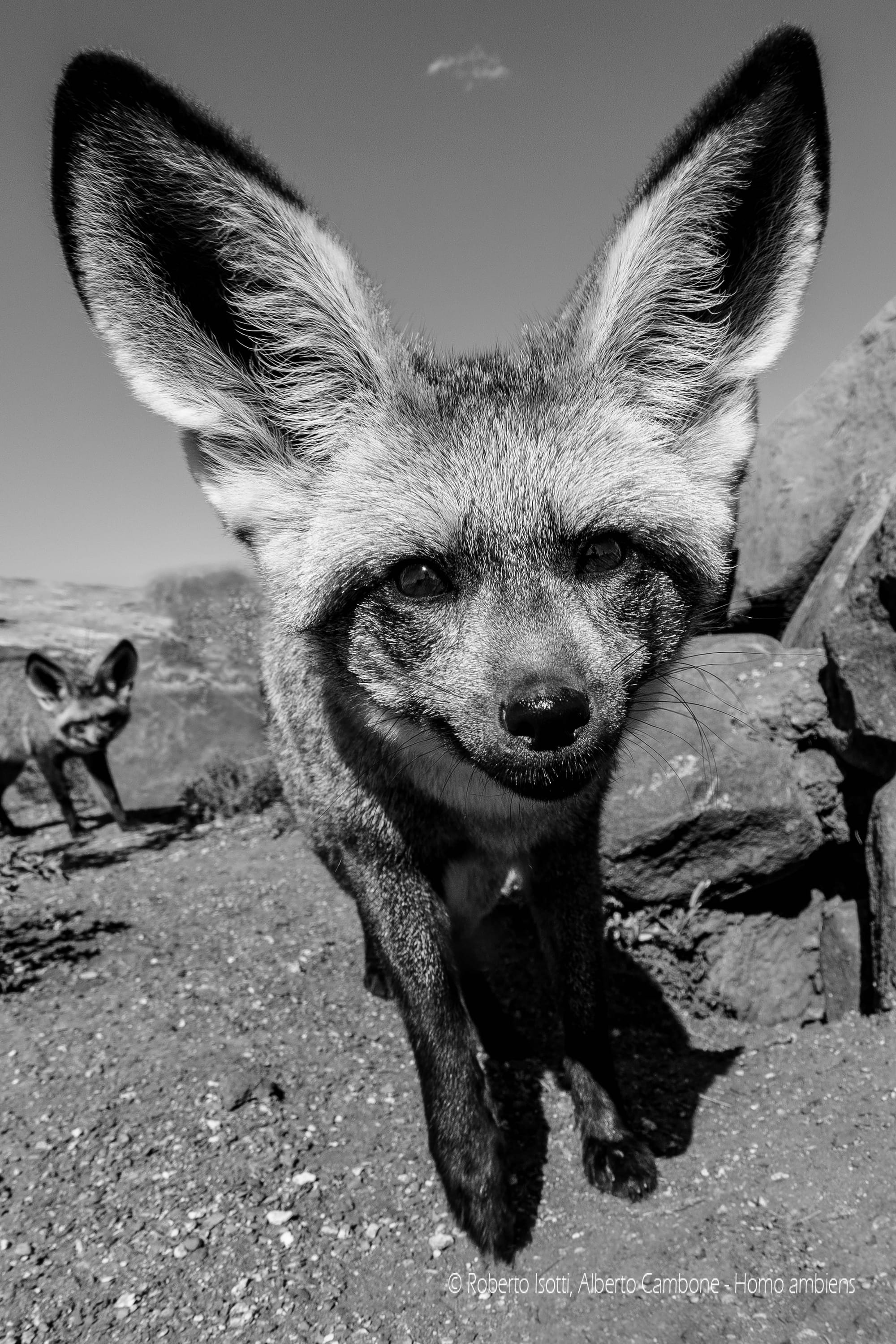
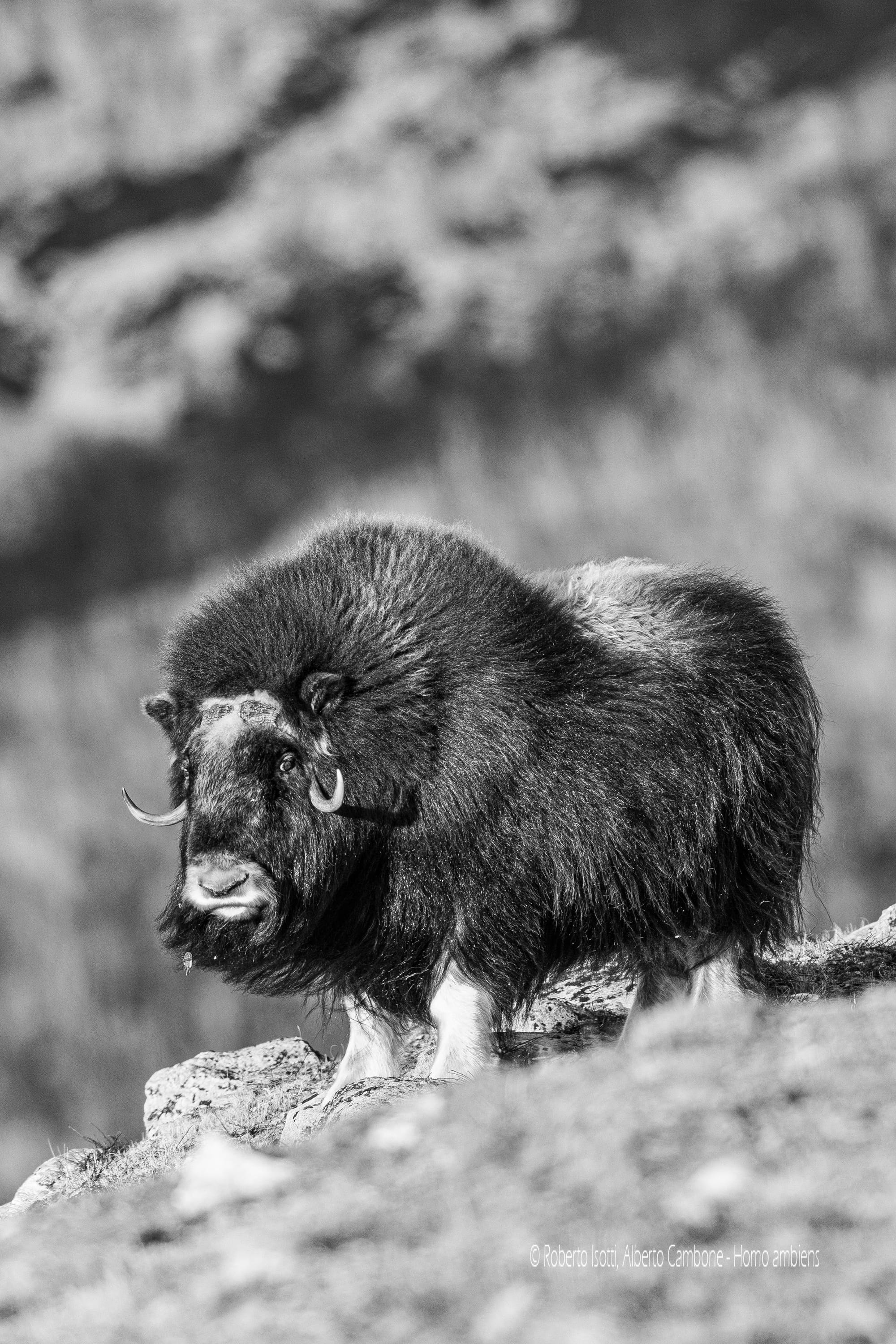
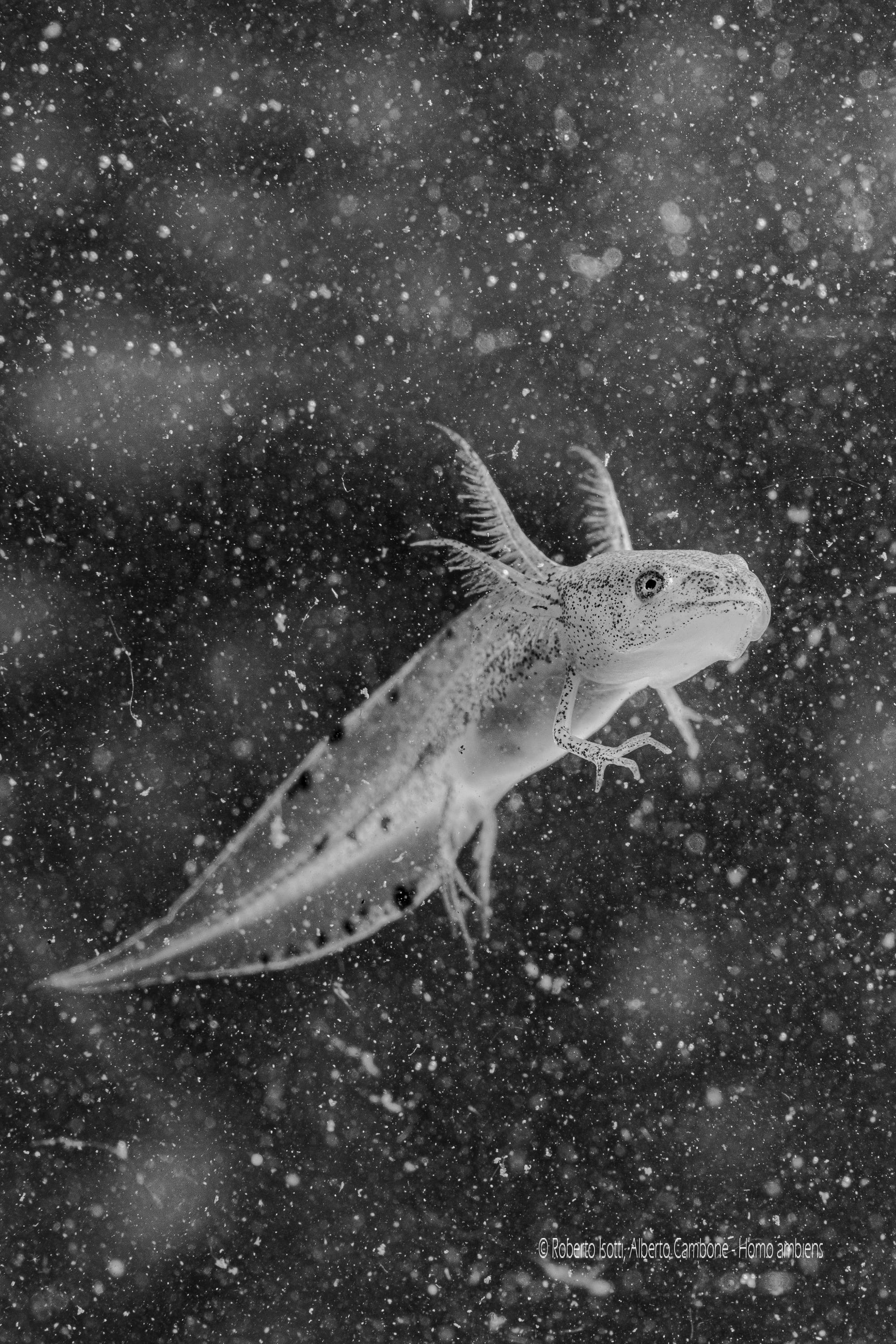
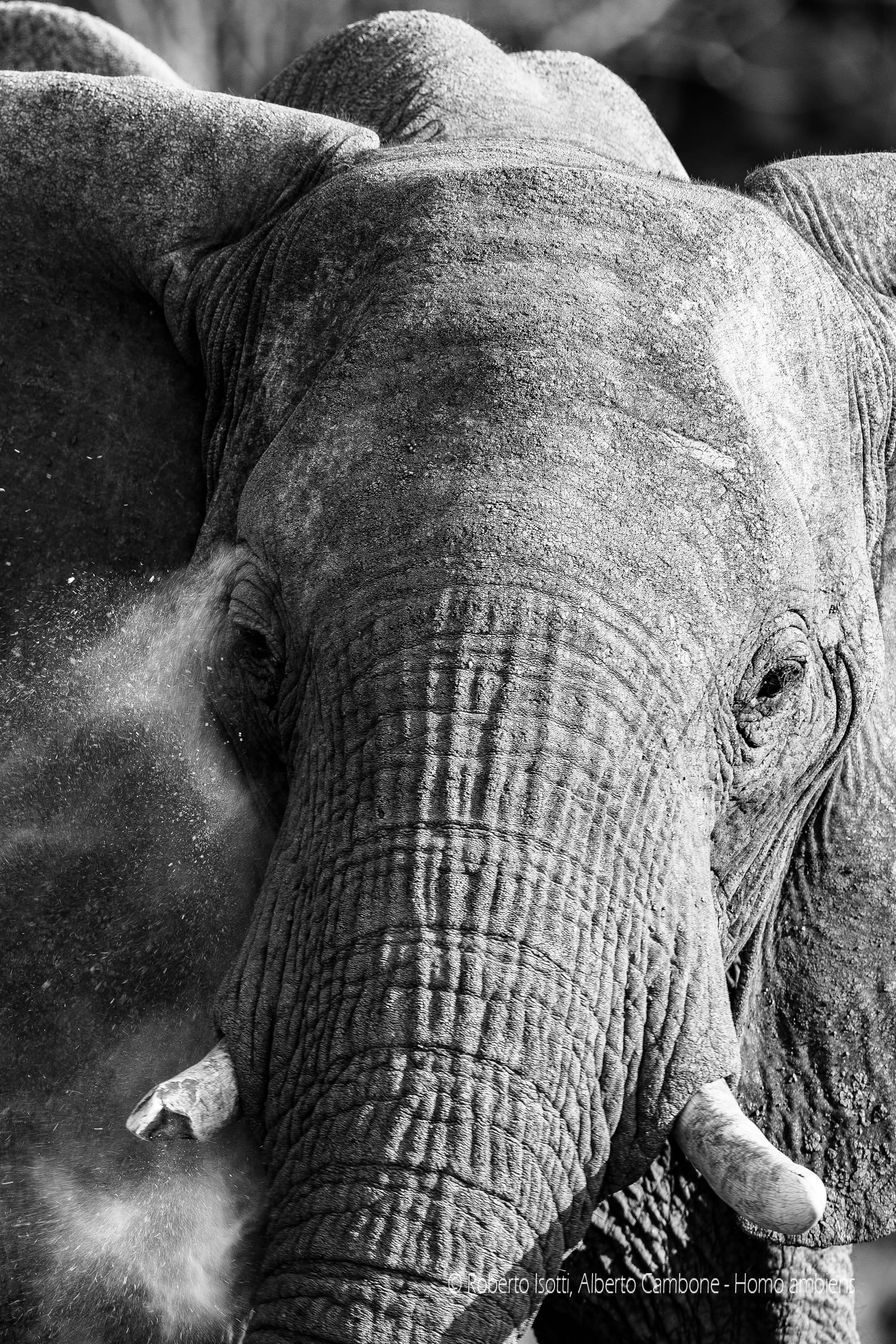
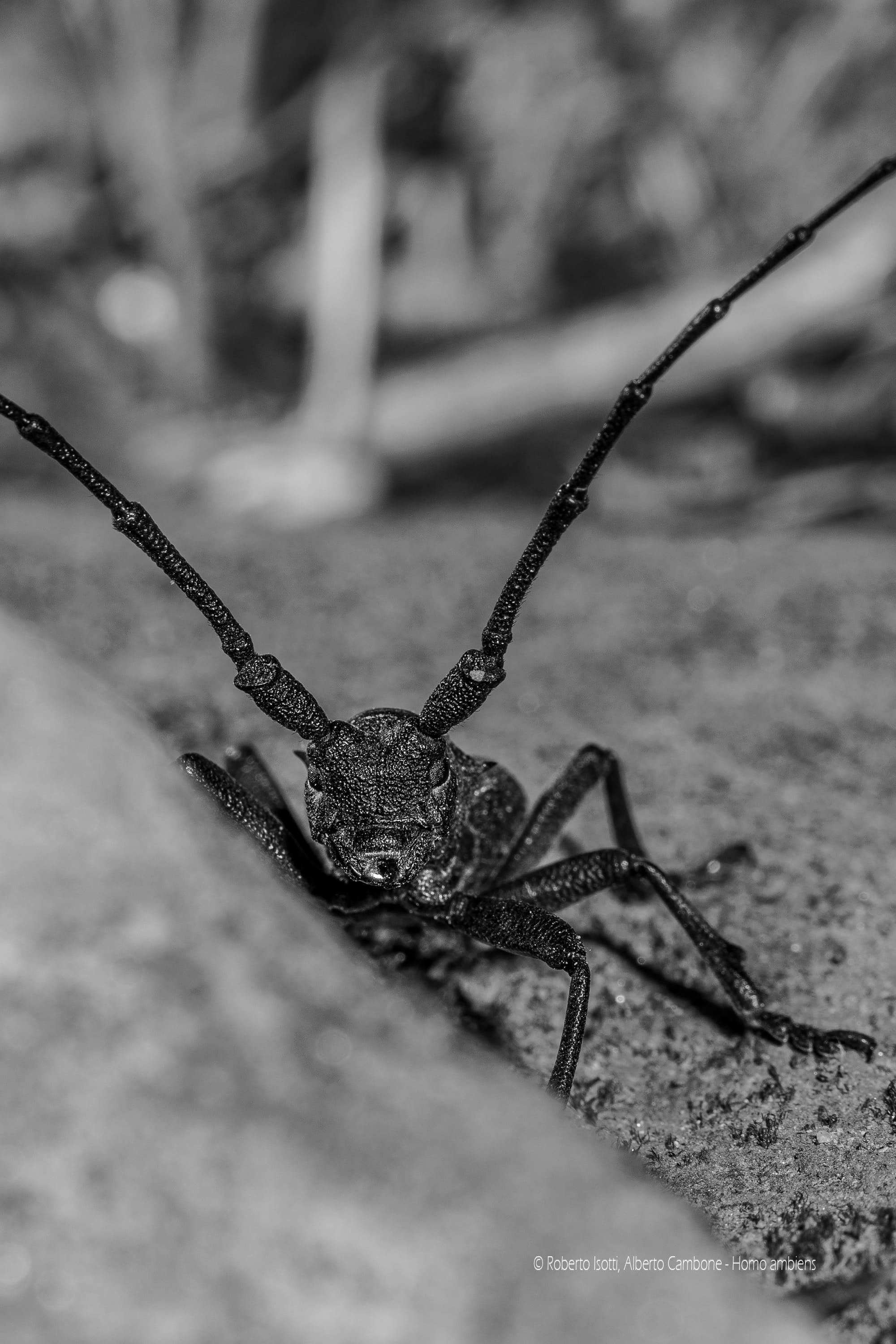
A. Cambone, R. Isotti - Homo ambiens
Luciano Di Tizio, president WWF Italy said, "Our species often forgets that it is part of nature and not outside or above it. Thus it has triggered a series of crises (climate and biodiversity) that threaten to change life as we know it. Saving endangered species and defending habitats that risk dissolution is the best way to protect our future. This exhibition, as well as the campaign the "Panda We Are" is meant to be a way to raise awareness that saving nature ultimately means saving ourselves as well."
[c.s.]



